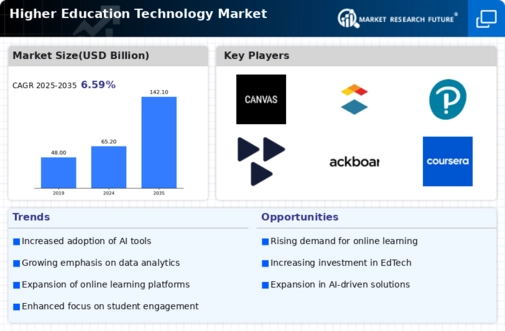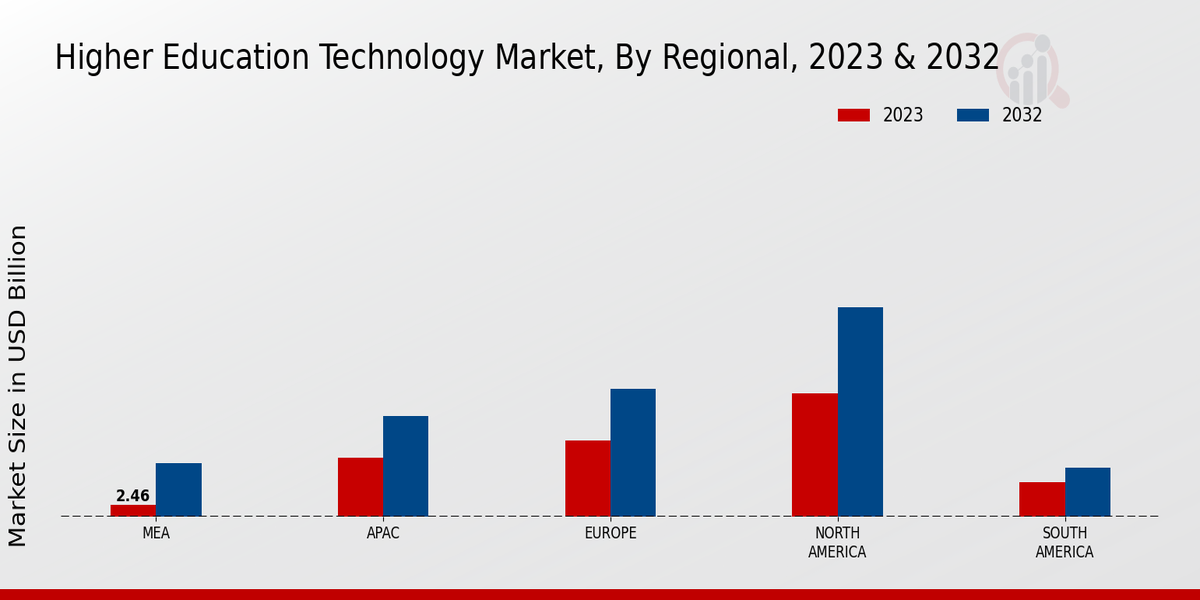Market Growth Chart
Focus on Student-Centric Learning
The Global Higher Education Technology Market Industry is witnessing a paradigm shift towards student-centric learning models. Institutions are increasingly prioritizing personalized learning experiences that cater to individual student needs and preferences. This approach is facilitated by technology, enabling educators to tailor content and instructional methods to enhance engagement and retention. As a result, educational institutions are investing in adaptive learning technologies and tools that support diverse learning styles. This focus on student-centricity is likely to drive market growth, as institutions recognize the importance of fostering an inclusive and supportive learning environment.
Growing Demand for Data Analytics
The increasing emphasis on data-driven decision-making is a significant factor influencing the Global Higher Education Technology Market Industry. Institutions are harnessing data analytics to gain insights into student performance, enrollment trends, and resource allocation. By utilizing advanced analytics tools, universities can identify at-risk students and implement targeted interventions, thereby enhancing student success rates. This trend aligns with the broader movement towards evidence-based practices in education. As the market evolves, the demand for robust data analytics solutions is expected to rise, contributing to the industry's projected growth and the anticipated CAGR of 7.34% from 2025 to 2035.
Integration of Artificial Intelligence
Artificial Intelligence (AI) is becoming a pivotal driver in the Global Higher Education Technology Market Industry. Institutions are leveraging AI for personalized learning experiences, predictive analytics, and administrative efficiency. For instance, AI-driven chatbots are being utilized to provide real-time support to students, enhancing their overall experience. This integration not only streamlines operations but also contributes to improved retention rates. As educational technology evolves, the role of AI is expected to expand, potentially transforming traditional educational paradigms. The market's growth trajectory suggests that AI could play a crucial role in achieving the projected market size of 142.1 USD Billion by 2035.
Expansion of Global Education Initiatives
The Global Higher Education Technology Market Industry is significantly influenced by the expansion of global education initiatives aimed at increasing access to quality education. Governments and organizations are investing in technology to bridge educational gaps, particularly in underserved regions. Initiatives such as online degree programs and partnerships with technology providers are enhancing educational opportunities for diverse populations. This expansion not only promotes equity in education but also drives demand for innovative educational technologies. As the market evolves, the focus on global education initiatives is expected to contribute to the industry's growth, aligning with the projected market size of 142.1 USD Billion by 2035.
Increased Adoption of Digital Learning Platforms
The Global Higher Education Technology Market Industry experiences a notable shift towards digital learning platforms, driven by the demand for flexible and accessible education. Institutions are increasingly adopting Learning Management Systems (LMS) and Massive Open Online Courses (MOOCs) to cater to diverse student needs. In 2024, the market is projected to reach 65.2 USD Billion, reflecting a growing preference for online learning solutions. This trend is likely to continue as educational institutions seek to enhance student engagement and improve learning outcomes through technology. As a result, the industry is poised for substantial growth, with an anticipated CAGR of 7.34% from 2025 to 2035.





















